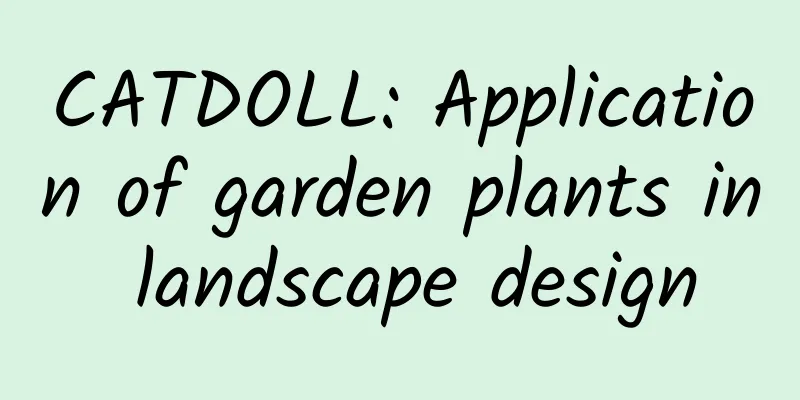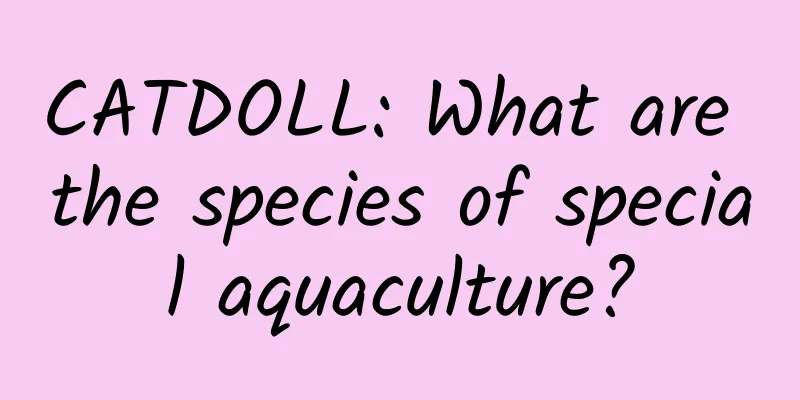CATDOLL : CATDOLL: Application of garden plants in landscape design

|
Application of Garden Plants in Landscape Design As an important landscape element in urban landscape design, the application of garden plants in landscape cannot be limited to simple cultivation, but should continue to develop with the development of the times to create an urban landscape that meets the needs of the times. The application of garden plants should be considered from multiple aspects such as landscape art effect, ecology, culture, site function, economy, environmental protection, etc., to comprehensively improve the application level of garden plants in landscape and create an ideal landscape effect. 1 The role of garden plants in urban landscape Garden plants in urban landscapes can not only improve the environment, provide people with a comfortable place for leisure and cultural and entertainment activities, but also create an artistic space for people to visit and appreciate. It gives people the enjoyment of the beauty of real life, is a reproduction of natural scenery and a display of spatial art. Garden plants have the functions of beautifying the environment, purifying the air, reducing noise, reducing soil erosion, improving the environment, climate, wind protection and shade. 1.1 Protect the environment and maintain ecological balance 1.1.1 "Air Purifier" (1) Garden plants can absorb CO2 in the air, release O2, and adjust the balance of CO2 and O2 in the air. (2) Garden plants have the function of absorbing harmful gases and evaluating and monitoring environmental quality. Many garden plants can effectively absorb harmful gases such as CO, HF, Cl2, etc. in the air. At the same time, the sensitivity of some garden plants to some harmful gases can also be used to evaluate and monitor environmental quality. (3) Garden plants have good dust absorption and bactericidal and sterilizing effects. In addition, urban garden plants are also natural "mufflers" that can effectively reduce the noise generated by vehicles, people, etc. 1.1.2 Regulating ecological balance and improving urban microclimate Garden plants are important factors in the ecological environment: they can effectively absorb solar radiation and reduce air temperature; they can effectively regulate air humidity through their own transpiration; they can purify water bodies and protect water and soil, etc. 1.2 Beautify the environment and cultivate sentiment Urban landscape not only adds vitality to the city, but also cultivates people's aesthetic taste and sentiment, giving people a beautiful enjoyment. Garden plants, with their different postures, colors, and smells, enable people to enjoy the aesthetics of nature through vision, smell, touch, etc. 2 Application principles of garden plants in landscape design 2.1 Principle of adapting measures to local conditions and planting trees suitable for the land Garden plants are living organisms with vitality. Each plant has specific requirements for its ecological environment. When using plants for urban landscape design, its ecological requirements must be met first. Therefore, when designing urban landscapes, the design should be based on the site conditions, combined with the characteristics of the garden plants themselves and the environmental requirements, so that the ecological habits of the plants themselves are consistent with the environmental conditions of the planting site. This requires designers to determine specific planting design plans based on surveys and comprehensive analysis of the environmental conditions of the design site (including temperature, humidity, light, soil and air). The planting design plan should reflect a good ecological environment and regional characteristics. We should not blindly introduce and promote foreign garden plants, but should focus on the development and application of local garden plants. 2.2 Biodiversity Principles In urban landscape design, the ecological characteristics of species should be fully considered, and plant species should be reasonably selected to form a community structure with a reasonable structure, sound functions, and stable populations, so as to facilitate mutual complementation between species, make full use of environmental resources, and form a beautiful landscape. In order to stabilize and coordinate the development of urban landscapes and maintain the ecological balance of cities, it is necessary to ensure the diversity of organisms. In a sense, paying attention to the diversity of garden plants is a process of simulating and creating natural ecosystems. Plants in nature are varied and colorful, and they have great ornamental value. If the plant population in the urban landscape is single, it is ecologically unbalanced and monotonous in landscape. The configuration of garden plants should pay attention to the combination of various trees, shrubs, vines, and herbs to form regional plant communities and increase the stability of populations. 2.3 Principle of Art The configuration of garden plants should follow the principles of aesthetics and attach importance to the landscape function of the garden. On the basis of following the ecology, according to the requirements of aesthetics, integration and creation should be carried out. In urban landscape design, the tree shape, color, line, texture and proportion of plants should have certain differences and changes, but they should also maintain certain similarities to cause a sense of unity. At the same time, attention should be paid to the mutual connection and coordination between plants, so that people have a soft, calm, comfortable and pleasant feeling. Not only should the current landscape of garden plants be emphasized, but also the seasonal changes and growth landscape effects of garden plants should be emphasized to achieve "different scenery with every step and every time", and create a landscape effect of "originating from nature, better than nature". 2.4 Economic principle The main purpose of garden plant landscape is to create ecological and social benefits, but this does not mean that investment can be increased without limit. In urban landscape design, the principle of economy must be followed, and both planting costs and later management costs must be considered to achieve the greatest ecological and social benefits with the least investment. 3 Application of garden plants in landscape design 3.1 Comprehensive Utilization of Various Garden Plants The selection of garden plant varieties should strive to be rich and diverse on the basis of unity. In urban landscape design, we must follow the principles of ecology and establish a multi-level, multi-structured and multi-functional plant community. Trees should be the main focus, and trees, shrubs, vines, herbal garden plants, etc. should be used in a comprehensive manner. The configuration of trees in urban landscapes should be based on tree shape, crown size and shape, deciduous or evergreen, with clear priorities and sparse arrangement. Trees, shrubs, vines, and herbaceous plants should be used to simulate natural flora, combining trees with shrubs, evergreens with deciduous leaves, trees and shrubs with ground covers and turf, and appropriately dotted with grass and flowers to form a multi-level composite structure and a hierarchical and structured artificial plant community. The general principle is to meet the requirements of ecological benefits and achieve an ornamental landscape effect. 3.2 Reasonable selection of garden plants based on the terrain characteristics of landscape design The design of garden plant space should be reasonably configured according to the conditions and artistic requirements of terrain undulation and space size. The contour lines of garden plant space should be high and low, flat and straight, and combined with the undulation of terrain. The contour lines of equal height are majestic and thick, but straight and monotonous; the contour lines of unequal height are rich and natural, but should not be messy, especially in gardens with small terrain undulations. Three-dimensional contour lines can be repeated, but they must have rhythm. 3.3 Rationally configure garden plants based on seasonal changes of plants Different garden plants have different seasonal changes. Urban landscapes should have natural landscapes that change with the seasons. When designing urban landscapes, you can choose plants according to their growth habits, such as early spring flowering plants such as jasmine, peach, magnolia, lilac, etc.; early summer flowering plants such as hibiscus, crape myrtle, and various grass flowers; autumn leaf ornamental plants such as liquidambar formosana, red maple, and ginkgo; and winter green plants such as pine, cypress, and bamboo. It is worth noting that due to different climatic conditions in different regions, the seasonal change time of plants will be different. Therefore, when matching the seasonal phases of garden plants, you should choose different plant varieties according to the geographical location. 3.4 Combination of garden plants and other landscape elements Garden plants not only have independent landscape appearances, but are also important combination materials for the composition of garden landscape pieces such as buildings, mountains and rivers, roads, sculptures and fountains. 3.4.1 Combination of garden plants and landscape architecture Landscape architecture is a hard landscape in the urban landscape that has been processed by artificial art. It is a combination of landscape function and practical function; while garden plants are living organisms with the beauty of nature and are the main body of urban landscape composition. Garden plants can not only make the building change with the seasons, but also set off and enrich the garden scenery of the building. According to the theme, artistic conception, characteristics, etc. of the landscape architecture, the configuration of garden plants can make the plants play a role in highlighting and emphasizing the theme of the landscape architecture. The configuration of garden plants can soften the monotonous, straight, and rigid lines of the landscape architecture, break the rigidity of the building, enrich the composition of the landscape building, and make the scenery of the landscape building rich and varied. Different styles of landscape architecture should use different garden plants. For example, the garden plants of temples and mausoleums should reflect the solemn scene, and they are mostly pine, cypress and other plants, and they are often planted in rows and pairs in front of the building or isolated in the courtyard; the garden plants of pavilions should be coordinated and unified with their shape and function. Considering the structure, shape and theme of the pavilion, the plant selection should be consistent with it; the garden plants around the teahouse should choose colorful osmanthus and other flowering shrubs; the plants in front of the waterside pavilion are mostly water-resistant metasequoia, pond cypress, weeping willow and so on. 3.4.2 Combination of garden plants with rocks and water bodies Although rocks and water bodies are the skeleton of natural garden landscapes, they also need to be decorated and complemented by garden plants. In urban landscapes, the importance of plant materials to rockery cannot be ignored. Bare rockery has no vitality and seasonal changes. If some garden plants such as moss, grass, and pine are added to it, it can add vitality to the rockery; garden water bodies can only be lively when combined with garden plants. Garden plants can not only purify water bodies, but also enrich the surface space and color of the water. Commonly used aquatic plants include lotus, water lily, Victoria amazonica, and scorpion grass. 3.4.3 Combination of garden plants and garden paths Garden paths are usually covered with trees, turf or other ground cover plants. Paths are paved with stone strips or stepping stones in the grass. Planting garden trees along the winding roads can serve as necessary sight blocks and space division. ; |
<<: CATDOLL: The efficacy and function of black fish
>>: CATDOLL: Is Longli fish a marine fish? Introduction to Longli fish
Recommend
CATDOLL: What are the nutritional values of eating shrimp?
1. What are the nutritional values of eating sh...
CATDOLL: What does intraperitoneal injection in fish mean?
1. What does intraperitoneal injection in fish me...
CATDOLL: Is the highest grade abalone worth more than 20,000?
1. Is the highest quality abalone worth more than...
CATDOLL: How long does it take to cultivate earthworms (how long is the appropriate time to cultivate earthworms)
1. How long is the earthworm breeding cycle? The ...
CATDOLL: What materials do you need to prepare to raise bees? (What materials do you need to prepare to raise bees?)
1. How to raise bees artificially? 1. Prepare the...
Which one is better, cat grass or hair removal cream? How to choose?
Cat grass and hair remover have different advanta...
How to scientifically plan and build a pig pen to help you successfully raise 50 pigs
Choose the right location The first thing to cons...
CATDOLL: An effective way to increase vaccination rates in pigs
How to improve pig vaccination rates Pig vaccinat...
CATDOLL: I went to Ningbo Shipu Seafood Street and ate at a seafood stall. I was confused.
I went to Ningbo Shipu Seafood Street and ate a s...
CATDOLL: There are a lot of small water fleas in the fish tank. Can they be dealt with?
1. There are many small water fleas in the fish t...
CATDOLL: Is it true that raising snails is profitable?
1. Are artificially cultivated African giant snai...
CATDOLL: How to treat fever in suckling pigs? How to solve the problem of fever in suckling pigs?
Fever problem and its impact on piglets Piglets a...
CATDOLL: How to deal with the batch of yellow croaker shipped from Nashan and Nahai to foreign countries?
1. How to deal with the batch of yellow croaker s...
CATDOLL: Conch farming? Conch farming?
1. Conch farming? 1. Breeding environment When br...
CATDOLL: Prospects and development trends of broiler processing industry
As people's demand for meat consumption incre...









